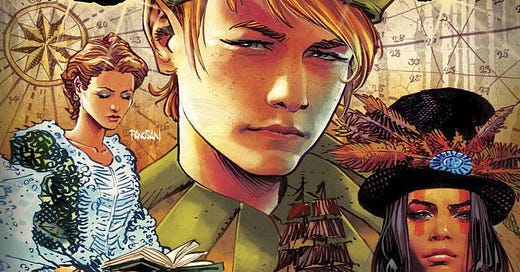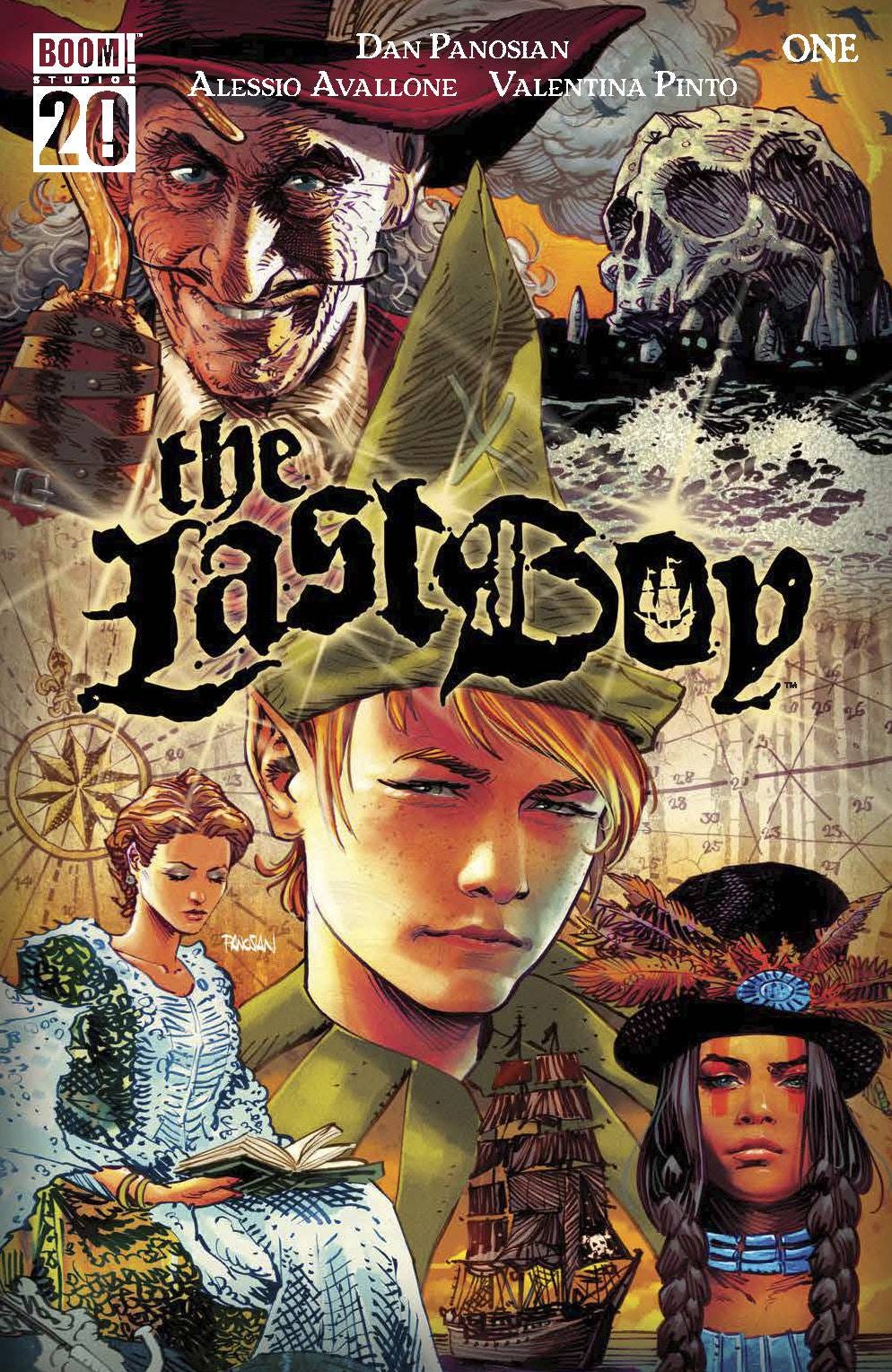Writer: Dan Panosian
Art: Alessio Avallone
Colors: Valentina Pinto with Agnese Pozza & Rik Mack
Letters: Jeff Eckleberry
Cover: Dan Panosian
Variant Covers: Eliza Ivanova; Adam Hughes; Bill Sienkiewicz; Dan Panosian
Publisher: Boom Studios
Price: 4.99
Release Date: March 19, 2025
Time Doesn’t Stand Still
Peter Pan is the boy who never grows up. And time never passes in his home of Neverland. But just because time doesn’t pass doesn’t mean characters can’t change, which is exactly what happens in The Last Boy #1.
Neverland is quiet when The Last Boy #1 begins. That doesn’t sit well with Peter Pan, who has never been a fan of boredom. He’s heard that Captain Hook is stealing from the natives and flies off to get the whole story. Confusion sets in when Peter finds Tiger Lily is the new chief and that Captain Hook hadn’t stolen from the tribe at all. Meanwhile in the real world, a grown Wendy Darling is stuck between worlds as she tries to grow into a successful writer while her mother expects her to be an old fashioned woman.
Wendy’s appearance in The Last Boy #1 is limited, more a sequence of scenes establishing her existence and life at this point in time. For now, her real world experiences provide underlying character information and a thematic connection to what Peter is facing in Neverland.
The key appeal of The Last Boy #1 is its treatment of Peter Pan’s underlying concept. Peter Pan never growing old implies a kind of overall stasis in Neverland. Nothing ever moves forward because Peter himself doesn’t move forward. But a lack of passage of time isn’t the same as a lack in development. Removing the stasis in Neverland while keeping Peter stubbornly locked in his attitudes creates a character out of time, replete with all the humorous and tragic possibilities that come with that idea. Getting confused by things like Tiger Lily being a chief makes Peter easy to laugh at.
This kind of humor at Peter’s expense isn’t enough to carry his story, though. It quickly turns into a tragedy based on his seeming unwillingness to accept that the world changes. Peter is the protagonist, but everyone else feels profoundly more sympathetic because of how he treats them. Tiger Lily’s single tear response to Peter’s refusal to listen to here is the perfect example.
Wendy And The Bright Blue Sky
A major story contribution from Wendy seems inevitable in this series, and Pinto’s coloring in The Last Boy #1 makes it clear that that contribution will occur in Neverland. The vast majority of Wendy’s scenes are washed out and oriented completely around a sepia based color palette. But when Wendy arrives at a seaport in the final panels, the sky above her has the same bright color palette as Neverland, with the yellow sun on the horizon surrounded by the blue of the sky.
This revelation comes after two pages devoid of dialogue. Avallone captures Wendy’s desperation and sadness leading up to the half-page panel showing a blue sky for the first time. Avallone draws Wendy’s eyes wider, and her eye line cast upward toward that sky. Suddenly Wendy is hopeful, with a happy longing. Pinto’s coloring elevates Avallone’s Wendy in that sequence.
Facial expressions vary somewhat depending on whether characters are in the real world or Neverland. Real world characters, such as Wendy, are drawn with greater subtlety, their emotions largely communicated by more subtle mouth and eye shapes. Neverland characters are more broad in their expressions, especially Peter whose mouth is drawn wide in almost all circumstances. Similar broad expressions are evident on Captain Hook and crew.
Eckleberry’s lettering choices keep the text through The Last Boy #1 well organized and easy to read. He’s consistent with bold text for loud and emphasized speech. A nice touch is the non-symmetrical dialogue bubbles. Rather than being perfectly oval or round, they have a slight hand drawn quality which works well in this fantasy oriented story.
Final Thoughts
It’s difficult to know where The Last Boy is going from this first issue. Wendy’s real world story is on a collision course with Peter’s story in Neverland. It’s very unclear how the different tones of angst surrounding Wendy, and humor and sad tragedy surrounding Peter will blend together. For now, The Last Boy #1 rests on an interesting premise, both amusing and full of potential even if it’s not a must buy.
What is good, everybody?
Thanks for reading the review of Boom Studios’ The Last Boy #1.
If you enjoyed this review (or even hated it!)…
You can also find me on X and Bluesky where I’m very active.
Also published at Comic Watch.





